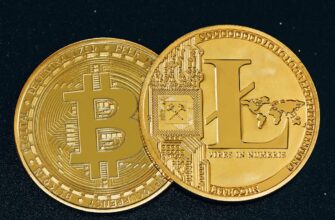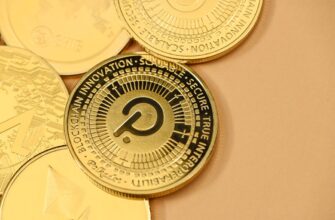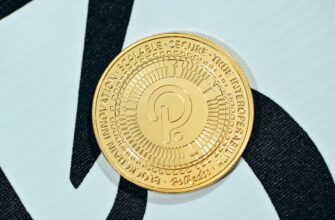XRP Number of Coins: Understanding Supply, Distribution, and Impact
XRP, the digital asset powering Ripple’s payment solutions, stands out in the crypto space with its fixed supply and unique distribution model. Unlike inflationary cryptocurrencies, XRP’s total coin count is permanently capped—a critical factor influencing its scarcity, value proposition, and utility in cross-border transactions. This guide breaks down the XRP number of coins, its circulation mechanics, distribution strategy, and why these elements matter for investors and users alike.
What Is the Total Supply of XRP?
XRP has a fixed maximum supply of 100 billion coins, all created at its inception in 2012. This contrasts sharply with mineable coins like Bitcoin (capped at 21 million) or inflationary tokens with uncapped supplies. The entire 100 billion XRP supply was pre-mined by Ripple’s founders before the network launch, eliminating the need for mining. This design ensures:
- Predictability: No new XRP will ever be created, providing long-term supply certainty.
- Efficiency: Eliminates energy-intensive mining, aligning with XRP’s focus on fast, low-cost transactions.
- Scarcity: Fixed supply creates inherent scarcity, a potential driver for value appreciation.
How Many XRP Coins Are in Circulation?
As of 2023, approximately 54–55 billion XRP are in active circulation—roughly 54–55% of the total supply. The remaining coins are held in escrow by Ripple, released strategically to support ecosystem growth. Key circulation dynamics include:
- Escrow releases: Ripple releases 1 billion XRP monthly from escrow, but typically re-locks 80%+ to manage market impact.
- Circulation growth: Supply increases gradually, averaging ~0.5% annually—far below fiat inflation rates.
- Real-time tracking: Sites like CoinMarketCap or CoinGecko update circulating supply based on Ripple’s escrow activity.
This controlled release mechanism prevents market flooding while funding Ripple’s operations and partnerships.
The Distribution of XRP Coins
XRP’s 100 billion coins were initially distributed as follows:
- Ripple Labs (Company): Retained 80 billion (80%) for operational funding and ecosystem development.
- Founders (Chris Larsen & Jed McCaleb): Received 20 billion (20%) as part of the creation agreement.
- Giveaways & Sales: Early adopters received 1.3 billion via giveaways; 7 billion sold to institutional investors.
Today, Ripple holds ~46 billion in escrow, with founders’ holdings reduced via structured sales. This distribution fuels criticism about centralization but also funds XRP’s adoption in banking and DeFi.
Why XRP’s Fixed Supply Matters
XRP’s capped supply isn’t just a technical detail—it shapes its economic model:
- Anti-inflationary shield: With no new coins minted, XRP avoids devaluation from supply surges.
- Value preservation: Scarcity may boost long-term price stability as adoption grows.
- Investor confidence: Clear supply transparency reduces speculative uncertainty.
- Utility alignment: Fixed supply complements XRP’s role as a bridge currency, where predictable liquidity is crucial.
Unlike central banks that print money, Ripple’s escrow mechanism ensures disciplined, programmable supply growth.
How to Buy and Securely Store XRP
Ready to add XRP to your portfolio? Follow these steps:
- Choose an exchange: Buy via platforms like Binance, Coinbase, or Kraken.
- Fund your account: Deposit fiat (USD, EUR) or swap other cryptocurrencies.
- Purchase XRP: Execute a market or limit order.
- Withdraw to a wallet: Never leave large holdings on exchanges.
Top Storage Options:
- Hardware wallets (Ledger, Trezor): Maximum security for long-term holds.
- Software wallets (Exodus, Trust Wallet): User-friendly for frequent access.
- Ripple-owned wallets (Xumm): Tailored for XRP transactions.
Frequently Asked Questions (FAQ)
Q: Will the total supply of XRP ever exceed 100 billion?
A: No. The 100 billion cap is hardcoded into XRP’s protocol—no additional coins can be created.
Q: How often does Ripple release XRP from escrow?
A: Ripple releases 1 billion XRP monthly but typically returns 800–900 million to new escrow contracts, limiting net new supply.
Q: What happens to unreleased escrowed XRP?
A: Unreleased coins stay locked in escrow until their scheduled release dates (extending to 2027+). Expired escrows are re-locked.
Q: Can Ripple manipulate XRP’s price via escrow?
A: Escrow limits manipulation by enforcing predictable releases. Ripple also publishes quarterly reports for transparency.
Q: Where can I track real-time XRP circulation?
A: Use CoinMarketCap, CoinGecko, or Ripple’s quarterly reports.
Conclusion: XRP’s fixed 100 billion supply and managed circulation model create a balanced ecosystem—combining scarcity for investors with controlled liquidity for real-world use. As Ripple expands partnerships with banks and payment providers, understanding these supply mechanics remains essential for gauging XRP’s long-term potential.








